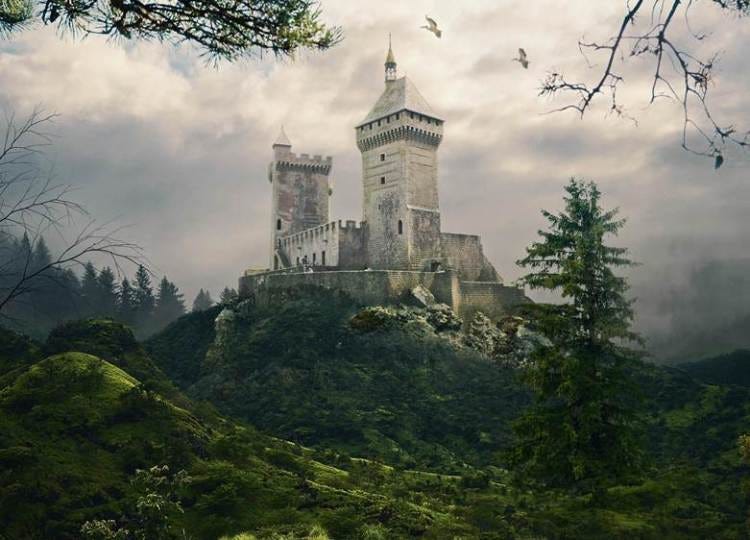This is a featured chapter from my upcoming book, Slaying Mithra: Magic, Mystery and the Trance Formation of the West.
“And men go abroad to admire the heights of mountains, the mighty waves of the sea, the broad tides of rivers, the compass of the ocean, and the circuits of the stars, yet pass over the mystery of themselves without a thought.”
― St. Augustine of Hippo, Confessions
Modern Western civilization and modern science didn’t emerge the way most of us have been taught. It’s generally known that a pivotal shift in world civilization occurred with the advent of the European Golden Renaissance. However, how this mysterious transformation in Western civilization occurred remains an elusive story.
How did we arrive from the closed, static universe of the Middle Ages, with its imagined perfect circles and starry spheres above and a perpetual vale of tears below, all of which was meticulously segregated by a strict series of hierarchies, to a universe of infinite potential, creation and development?
The significance of the Renaissance is usually explained away with a few art history narratives about celebrations of the human form and its triumph over the static world of medieval abstractions. Misleading terms like “Humanism” are proffered as legitimate explanations, despite being invented centuries later and having never been used by the Renaissance founders. The period is otherwise treated as the herald of a new age of “free inquiry” during which the mind of man was no longer dominated by the arcane workings of a medieval priestly class and its theological strictures.
While it would be fair to characterize the Renaissance as an age in which a new revitalized image of man took root in the hearts and minds of Western civilization, the usual narratives conveniently obscure the deeper roots, ideas and players involved in bringing about the miracle that is modern Western civilization.
In our continuing “Renaissance, Not Reset” series, we’ll be uncovering the hidden history of the Renaissance, and the nature of those anti-Renaissance forces who would love nothing more than to keep this story secret.
As we’ll see, this very real tale holds the key to any new Renaissance in Western civilization today.
A New Middle Ages?
“Men of intuition perceive, all the signs and proofs show, that we have passed from an era of light to an era of darkness… Night is not less wonderful than day, it is equally the work of God; it is lit by the splendour of the stars and it reveals to us things that the day does not know. Night is closer than day to the mystery of all beginning.”
The End of Our Time – Nikolai Berdyaev
At the heart of the Renaissance was a re-conceptualization of man’s self-image. While Renaissance minds drew from the ancient classical world and relied on its models of eloquence, cultivation and artistic beauty to inform their own age’s tastes and judgements, this revived classical movement was now animated by a new conception: the Judeo-Christian notion that all men were uniquely created in the image of their Creator. As a divine reflection of the Creator—an imago viva dei (a living image of God)—man was endowed with a god-like capacity, a capax dei, which it was his divine duty to cultivate. Further, it was a society’s responsibility to encourage this development, such that all individuals might flourish to their utmost potential—and be availed of the means to do so.
However, the new image of man as a sovereign co-creator was not a welcomed change by all. In fact, it has been under assault ever since its emergence on the world stage.
For instance, the Russian orthodox philosopher Nikolai Berdyaev is celebrated as one of the early twentieth-century luminaries whose traditionalist critiques of the Renaissance and the modern world supposedly brought to light the fatal errors of the fifteenth-century revolution. For Berdyaev, the Renaissance ended the purer times of Medieval faith and craft, in which societies were rooted in their traditions and the collective belief in the mysterious workings of God. These beliefs held society together and gave it its spiritual vitality, we are told. With the advent of the Renaissance, breakthroughs in scientific thought and artistic composition would ultimately sever man from this collective mystery, leading to the radical individualism of modern times and the belief that man could act as an independent operator.
As a result of the Renaissance, man found himself fallen into a secular void populated by machines, mechanical relationships and soulless rationality. Berdyaev writes:
“The Renaissance had the seeds of death within itself, in its foundations lay the destructive contradiction of Humanism, which on the one hand exalted man and attributed to him unlimited powers, and on the other saw nothing in him but a limited dependent creature, knowing nothing of spiritual freedom. In order to make man greater, Humanism took away his likeness to the divine and subjected him to natural necessity. The Renaissance, based on Humanism, uncovered the creative powers of man as a natural being, not as a spiritual one; but the natural man alone cannot draw from inexhaustible springs for his creativeness: he drains himself dry, and only the arid surface of life is left.”
Keep reading with a 7-day free trial
Subscribe to Age of Muses to keep reading this post and get 7 days of free access to the full post archives.





